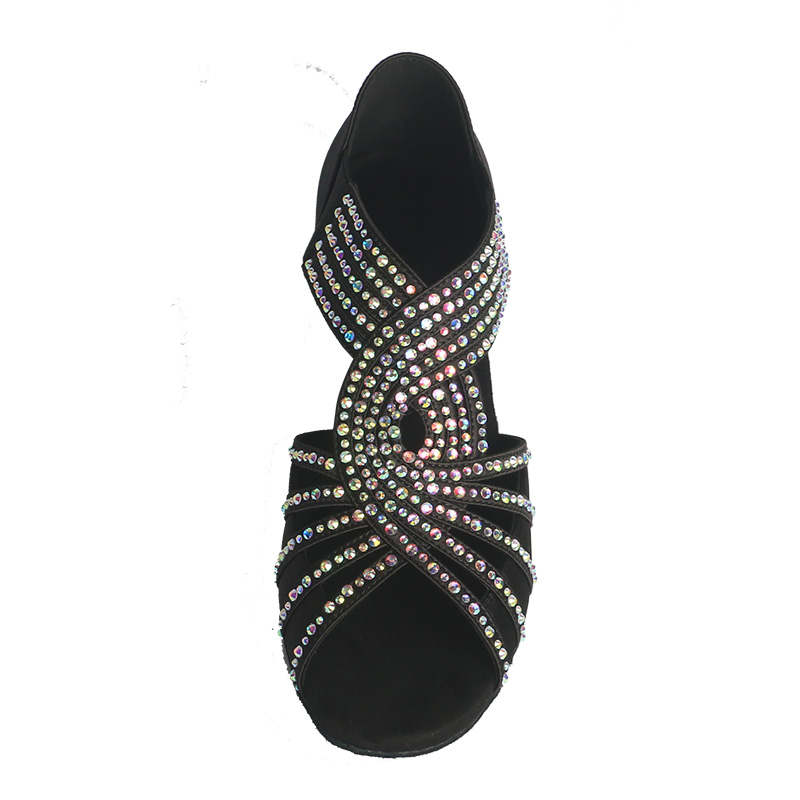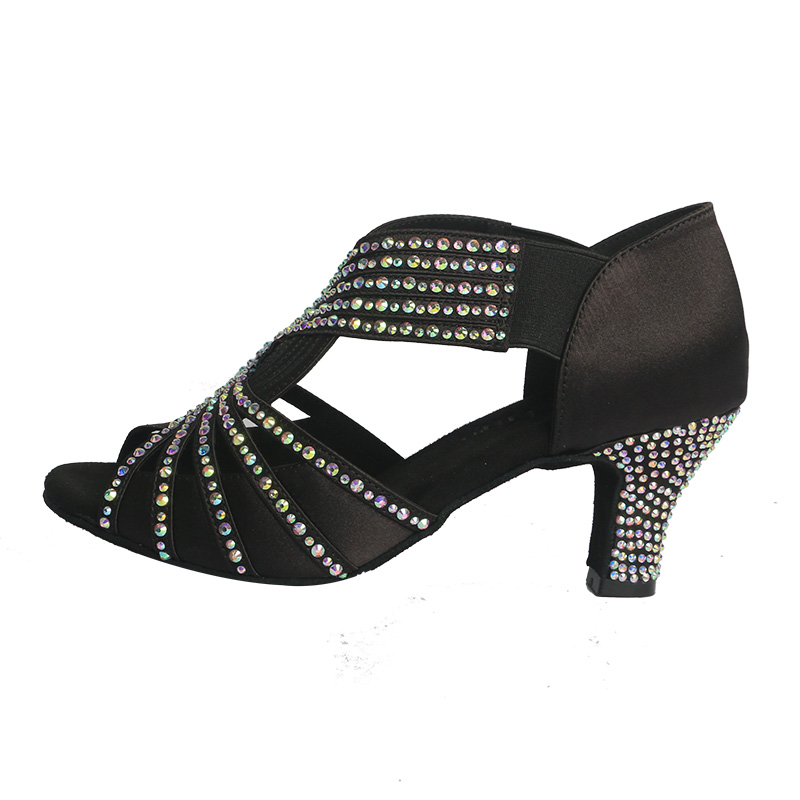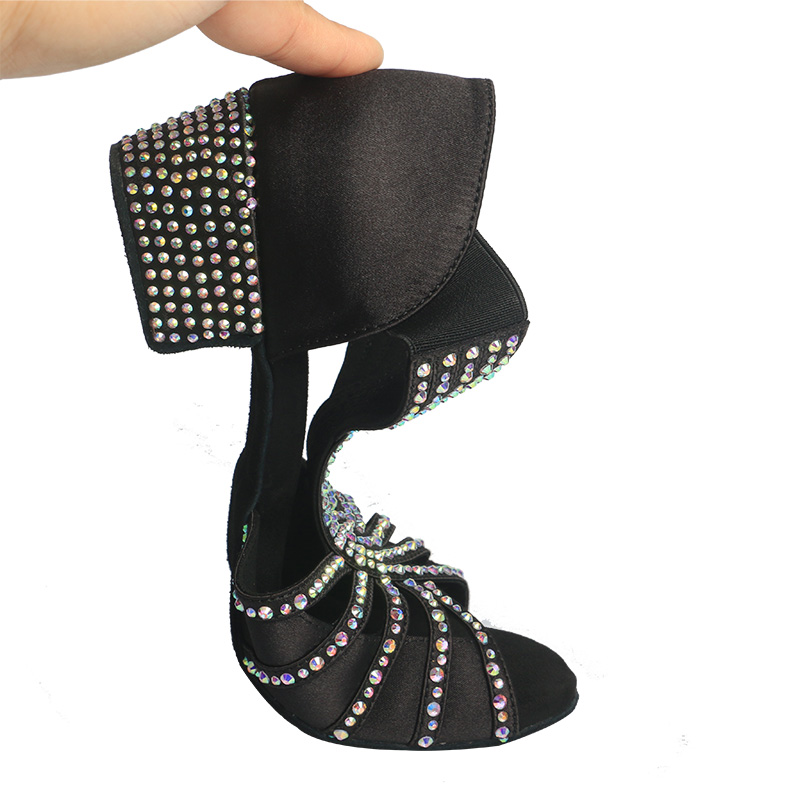Benefits of Leather Soles for Dance
Leather soles offer unique advantages for dancers. Their smooth texture allows for seamless gliding across the dance floor. This helps in executing turns and slides with minimal friction. Leather is also renowned for its durability. Leather sole dance shoes withstand long hours of practice and performance.

Versatility on Various Dance Surfaces
Leather soles are fit for a range of surfaces. Whether you dance on wood or marley floors, they adapt well. They offer a consistent performance, which is crucial for dancers who perform on different stages.
Enhanced Balance and Stability
The flexibility of leather allows dancers to feel the floor. This connection improves balance and stability during complex movements.
Optimal Comfort and Fit
With wear, leather molds to the shape of the foot. This offers a custom-like fit, enhancing comfort. It also reduces the chances of blisters and discomfort over time.
Superior Sound Quality
For tap and flamenco dancers, the sound is key. Leather soles produce clearer, crisper sounds, which is essential for these dance styles.
Improved Aesthetics
Lastly, leather sole dance shoes often come in timeless designs. They offer an elegant look that complements dance attire.
Overall, leather sole dance shoes are a choice that combines function with sophistication. They play a pivotal role in a dancer’s performance and experience.
Choosing the Right Leather Sole Dance Shoes
Finding the right pair of leather sole dance shoes is vital. It requires considering several factors to ensure optimal performance and comfort. Here’s what dancers should look out for:
Fit and Size
A good fit is essential. Dancers should aim for shoes that snugly fit without causing discomfort. Remember, leather stretches with time. It’s wise to choose shoes that feel secure but not too tight.
Shoe Style
Various dance styles demand specific shoe designs. Ballroom dancers might prefer a closed-toe shoe, while Latin styles often call for open-toed options. Choose the style that suits your dance form the best.
Sole Thickness
The thickness of the leather sole affects flexibility. Thinner soles offer more floor feedback, which is great for experienced dancers seeking better floor connection. Beginners may want a thicker sole for more support.
Heel Height
Heel height can impact balance and dance style. Lower heels are usually more stable, which is especially important for new dancers. Choose a height that matches your skill level and comfort.
Quality of Leather
High-quality leather lasts longer and adapts better to the shape of your foot. Look for shoes made with supple, durable leather for a lasting investment.
Arch Support
Good arch support is key for a dancer’s foot health. Ensure your shoes provide the necessary support to avoid injuries and fatigue.
By addressing these factors, dancers can select leather sole dance shoes that enhance their experience on the floor. The right pair complements your movements and boosts confidence in your dance journey.

Types of Dance Styles and Leather Sole Shoes
Choosing the right leather sole dance shoes often depends on the dance style. Different styles require specific features for peak performance. Here, we’ll explore how leather soles pair well with various dance genres.
Ballroom Dancing
For ballroom dances like the waltz or tango, shoes with leather soles offer precise control. They allow smooth movements and pivots on the floor.
Latin Dance
Latin dance styles, such as salsa or cha-cha, often demand flexibility. Leather soles aid intricate footwork and rapid turns.
Jazz
Jazz dancers enjoy the slip-and-grip nature of leather soles. They help in executing sharp, stylized movements with ease.
Tap Dance
Leather soles resonate well with the floor. This creates the crisp sounds essential in tap dancing.
Ballet
While traditional ballet shoes do not have leather soles, some variations use leather. These assist with stability during certain floorwork.
Folk Dance
Many folk dances embrace leather sole shoes for their traditional appearance and long-lasting build.
Understanding these associations helps dancers make informed choices. When selecting leather sole dance shoes, think about the dance style. Ensure they match the needs of the genre for your best performance.
Caring for Your Leather Sole Dance Shoes
Proper care for your leather sole dance shoes ensures they last longer and perform better. Follow these essential tips to maintain your shoes in pristine condition:
Regular Cleaning
Wipe your shoes with a soft cloth after each use. Remove dirt and buildup that can damage the leather over time. For deeper cleans, use a specialized leather cleaner.
Moisture Management
Leather can warp if it becomes too moist. Dry your shoes naturally at room temperature if they get wet. Avoid placing them near heaters or in direct sunlight.
Conditioning the Leather
Periodically apply a leather conditioner. This keeps the material supple and prevents cracking. Be sure to follow the product’s instructions for the best results.
Rotating Shoes
If possible, rotate between multiple pairs of dance shoes. This gives leather soles time to recover, maintaining their structure and durability.
Storing Properly
Store your shoes in a cool, dry place. Use a shoe tree or stuff them with paper to help maintain their shape. Protective bags or boxes can shield them from dust when not in use.
Resoling When Needed
Leather soles wear down with use. Have a professional cobble resole your shoes when necessary. This can rejuvenate an old pair and save you the cost of buying new ones.
Heel Maintenance
Check the heels of your leather sole dance shoes regularly. Tighten any loose screws and repair worn down heels to prevent accidents.
By respecting these care instructions, your leather sole dance shoes will support you for countless dances. Taking the time to maintain them pays off with enduring quality and performance.

Common Brands and Where to Buy
When shopping for leather sole dance shoes, it’s essential to know the reputable brands that dancers favor. Brands such as Capezio, Bloch, and Freed are well-known in the dance community for their high-quality leather sole dance shoes. These brands have established a strong reputation for providing durable, comfortable, and stylish footwear that meets the nuanced demands of various dance styles.
Capezio
Capezio dance shoes are synonymous with quality and tradition. They offer a range of styles suitable for ballet, tap, jazz, and ballroom. You can find Capezio shoes in most dance retail stores as well as online.
Bloch
Bloch is recognized for innovative design and superb artistry. Their leather sole dance shoes are popular among ballet and jazz dancers. Bloch products are available at specialized dance shops and on their official website.
Freed of London
Freed of London shoes are favored by professional ballroom and Latin dancers. They provide handcrafted shoes that ensure a perfect fit. Freed’s shoes can be purchased at select retailers and on their web store.
When deciding where to buy, consider visiting local dancewear shops where you can try on different brands and styles. Specialist dance stores often have knowledgeable staff who can advise you on the best fit and shoe for your dance needs. For convenience, online shopping is an option. Many retails offer size guides and flexible return policies. Regardless of where you purchase your shoes, ensure you are getting an authentic product that offers the support and quality required for your dance practice.
The Role of Shoe Construction in Dance Performance
Understanding the role of shoe construction in dance performance is crucial. A shoe’s design can greatly influence a dancer’s ability to move and the quality of their performance. Let’s look at key aspects of shoe construction:
Material Selection
The materials used in a dance shoe affect its flexibility, weight, and breathability. Leather, a common choice, offers durability and adaptability to the foot’s shape. Dancers benefit from leather’s unique properties during long rehearsals and performances.
Structure and Support
An effectively crafted shoe provides necessary support where it’s needed. For instance, arch support is vital in preventing injuries. A well-designed shoe also includes a secure fastening system to prevent slips and ensure a snug fit.
Sole Construction
Leather sole dance shoes should have a sole that balances grip with the ability to slide when required. The thickness and texture influence this balance. A sole that’s too slippery or too grippy can hinder performance.
Heel Design
Heel height can alter a dancer’s posture and balance. The construction of the heel must be solid to withstand the pressure of dance movements. It should also align with the dance style and dancer’s skill level.
Aesthetic Integration
Shoes not only have to perform well but also look the part. A sleek design can boost a dancer’s confidence and contribute to the overall visual appeal of the dance.
In summary, the construction of leather sole dance shoes is not just about fashion. It’s an essential part of a dancer’s performance, affecting movement, safety, and style. Paying attention to these construction elements helps dancers choose shoes that elevate their dance experience.
Transitioning to Leather Soles: Tips for Dancers
Transitioning to leather sole dance shoes can be a game-changer for many dancers. Embracing them might require an adjustment period. Here are practical tips to make the shift smoother:
Start with the Right Fit
Make sure you get shoes that fit well. Ensure they are snug but not too tight. Remember, leather stretches over time.
Ease Into It
Begin with shorter practice sessions. This helps your feet adapt to the feel of leather soles. Gradually increase the time as you get more comfortable.
Practice On the Right Surface
Start practicing on the intended dance floor surface. This will give you a true feel for how the shoes will perform.
Listen to Your Body
Pay attention to how your feet respond. Any discomfort might signal that you need a different style or fit.
Strengthen Your Feet
Work on foot exercises. Strengthening the muscles will help you control your movements with the new soles.
Check the Grip
If the soles are too slippery, a cobbler can roughen them up. This provides better traction. Do this only if necessary.
Be Patient
All changes take time. Allow yourself to get used to the leather soles. Soon, you’ll likely notice an improvement in your dance performance.
By following these tips, dancers can transition to leather sole dance shoes smoothly. With time and practice, you’ll enjoy the benefits they bring to your dance experience.